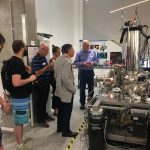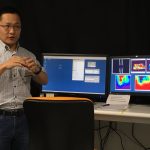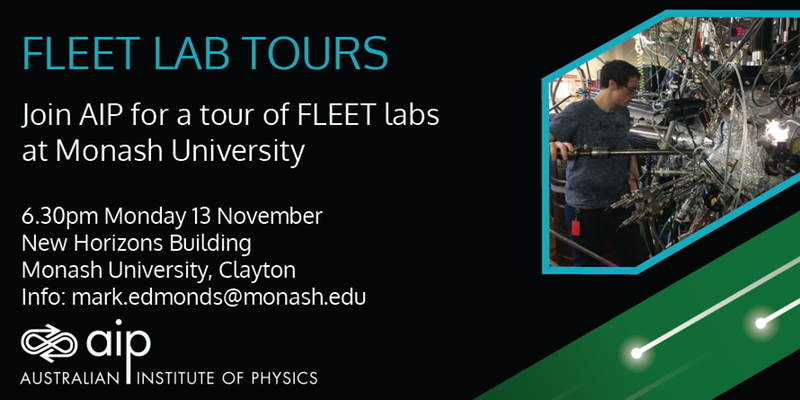FLEET’s Monash labs recently hosted a tour by members of the Victorian branch of the Australian Institute of Physics, the country’s leading body for physics advocacy and support.
The tour included the experimental laboratories of FLEET Chief Investigators Michael Fuhrer, Agustin Schiffrin, Kris Helmerson and Qiaoliang Bao.
Members saw where:
 Michael Fuhrer grows atomically-thin (2D) materials in the lab using molecular beam epitaxy and tests their electronic properties using scanning probe microscopy and electrical transport.
Michael Fuhrer grows atomically-thin (2D) materials in the lab using molecular beam epitaxy and tests their electronic properties using scanning probe microscopy and electrical transport.
Agustin Schiffrin synthesises low-dimensional organic nanomaterials and investigates their electronic, optoelectronic and charge dynamics properties via scanning probe microscopy, synchrotron-based techniques and ultrafast pump-probe spectroscopies.
Kris Helmerson uses ultracold atoms (Bose-Einstein condensates) to investigate temporary, imposed topological states in multi-dimensional extensions of the kicked quantum rotor.
 Qiaoliang Bao investigates waveguide-coupled 2D semiconductors and plasmon-coupled 2D materials and devices, focusing on the effect of confined-space light-matter interactions on electron transport.
Qiaoliang Bao investigates waveguide-coupled 2D semiconductors and plasmon-coupled 2D materials and devices, focusing on the effect of confined-space light-matter interactions on electron transport.
Prior to the tour, Director Michael Fuhrer explained the background of ever-increasing energy costs of computation, and FLEET’s mission to create new, ultra-low energy electronics using atomically thin, two-dimensional materials. A networking event followed, with cheese in quantities that were anything but atomically thin.

